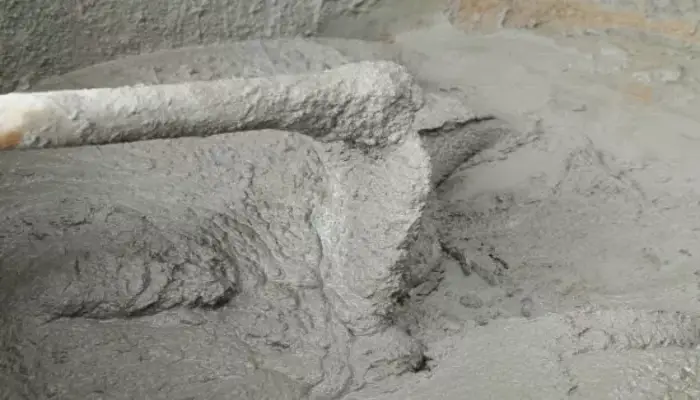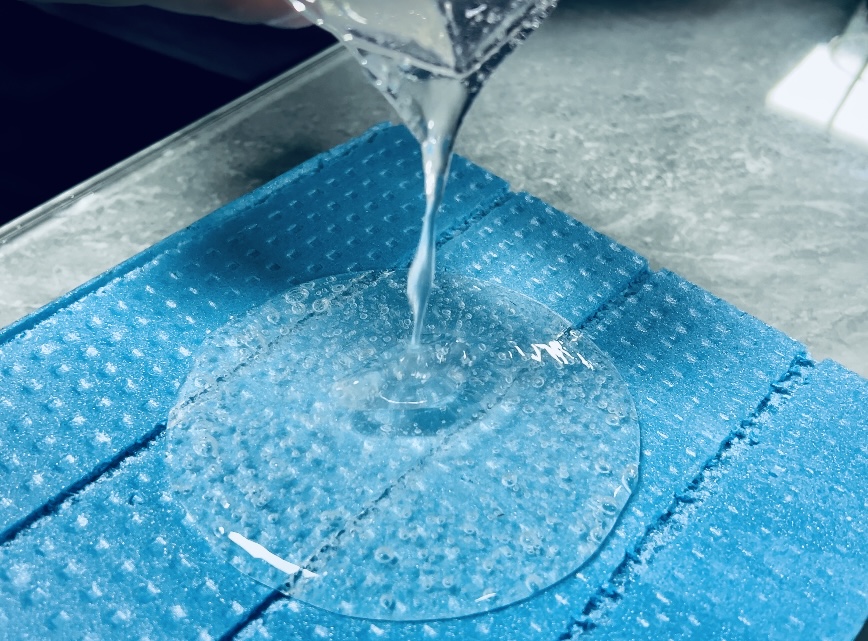(1). Cellulose ether-water retention
Water retention is an important performance of methylcellulose ether, and it is also a performance that many domestic dry mortar manufacturers, especially those in southern areas with higher temperatures, focus on. In the production of building materials, especially dry mortar, cellulose ether plays an irreplaceable role, especially in the production of special mortar (modified mortar), it is an indispensable and important component.
The viscosity, dosage, ambient temperature and molecular structure of cellulose ether have a great impact on its water retention performance. Under the same conditions, the greater the viscosity of cellulose ether, the better the water retention; the higher the dosage, the better the water retention. Usually a small amount of cellulose ether can greatly improve the water retention rate of the mortar. When the dosage reaches a certain When the temperature rises, the increasing trend of water retention slows down; as the ambient temperature increases, the water retention of cellulose ethers usually decreases, but some modified cellulose ethers also have better water retention under high temperature conditions; fibers with lower degrees of substitution Plain ether has better water retention properties.
The hydroxyl groups on the cellulose ether molecules and the oxygen atoms on the ether bonds will associate with water molecules to form hydrogen bonds, turning free water into bound water, thus playing a good water retention role; the interaction between water molecules and cellulose ether molecular chains Interdiffusion allows water molecules to enter the interior of the cellulose ether macromolecular chain and be strongly restrained, thereby forming free water and entangled water, which improves the water retention of cement slurry; cellulose ether improves the fresh cement slurry. The rheological properties, porous network structure and osmotic pressure or film-forming properties of cellulose ethers hinder the diffusion of water.
(2). Cellulose ether-thickening and thixotropy
Cellulose ether gives the wet mortar excellent viscosity, which can significantly increase the bonding ability between the wet mortar and the base layer, and improve the anti-sag performance of the mortar. It is widely used in plastering mortar, tile bonding mortar and exterior wall insulation systems. The thickening effect of cellulose ether can also increase the dispersion resistance and homogeneity of fresh materials, prevent material delamination, segregation and bleeding, and can be used in fiber concrete, underwater concrete and self-compacting concrete.
The thickening effect of cellulose ether on cement-based materials comes from the viscosity of the cellulose ether solution. Under the same conditions, the higher the viscosity of the cellulose ether, the better the viscosity of the modified cement-based material. However, if the viscosity is too high, it will affect the fluidity and operability of the material (such as sticking to the plaster knife). Self-leveling mortars and self-compacting concrete that require high fluidity require a low viscosity of cellulose ether. In addition, the thickening effect of cellulose ethers increases the water demand of cement-based materials and increases mortar yields.
High-viscosity cellulose ether aqueous solution has high thixotropy, which is also a major characteristic of cellulose ether. Aqueous solutions of methylcellulose generally have pseudoplastic, non-thixotropic flow properties below their gel temperature, but exhibit Newtonian flow properties at low shear rates. Pseudoplasticity increases with the increase in molecular weight or concentration of cellulose ether, regardless of the type and degree of substitution of the substituent. Therefore, cellulose ethers of the same viscosity grade, whether MC, HPMC, or HEMC, will always exhibit the same rheological properties as long as the concentration and temperature are kept constant. When the temperature is increased, a structural gel is formed and high thixotropic flow occurs.
High concentrations and low viscosity cellulose ethers exhibit thixotropy even below the gel temperature. This property is of great benefit in adjusting the leveling and sagging properties of building mortar during construction. It should be noted here that the higher the viscosity of the cellulose ether, the better the water retention, but the higher the viscosity, the higher the relative molecular weight of the cellulose ether, and its solubility decreases accordingly, which has a negative impact on the mortar concentration and construction performance.
(3). Cellulose ether-air-entraining effect
Cellulose ether has obvious air-entraining effect on fresh cement-based materials. Cellulose ether has both hydrophilic groups (hydroxyl group, ether group) and hydrophobic groups (methyl group, glucose ring). It is a surfactant with surface activity and thus has an air-entraining effect. The air-entraining effect of cellulose ether will produce a “rolling ball” effect, which can improve the working performance of fresh materials, such as increasing the plasticity and smoothness of mortar during operation, which is beneficial to the paving of mortar; it can also increase the output of mortar , reducing the cost of mortar production; but it will increase the porosity of the hardened material and reduce its mechanical properties such as strength and elastic modulus.
As a surfactant, cellulose ether also has a wetting or lubricating effect on cement particles, which together with its air-entraining effect increases the fluidity of cement-based materials, but its thickening effect will reduce the fluidity. Cellulose ether has a negative effect on cement-based materials. The impact of fluidity is a combination of plasticizing and thickening effects. Generally speaking, when the dosage of cellulose ether is very low, the main performance is plasticizing or water-reducing effect; when the dosage is high, the thickening effect of cellulose ether increases rapidly, and its air-entraining effect tends to be saturated. So it shows a thickening effect or an increase in water demand.
(4). Cellulose ether-retarding effect
Cellulose ether will prolong the setting time of cement slurry or mortar and delay the cement hydration kinetics, which is beneficial to improving the operability time of freshly mixed materials and improving the time-dependent loss of mortar consistency and concrete slump, but it may also cause delay construction progress.
Post time: Oct-23-2023




